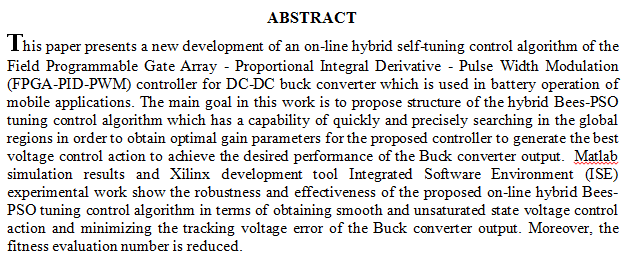
1-[4-(2-Hydroxy-4, 6-dimethyl-phenylazo)-phenol]-ethanone (HL1) and 2-(4-methoxy-phenylazo)-3, 5- dimethyl-phenol (HL2) were produced by combination the diazonium salts of amines with 3, 5- dimethylphenol. The geometry of azo compounds was resolved on the basis of (C.H.N) analyses, 1H and 13CNMR, FT-IR and UV-Vis spectroscopic mechanisms. Complexes of La (III) and Rh (III) have been performed and depicted. The formation of complexes has been identified by using elemental analysis, FTIR and UV-Vis spectroscopic process as well, conductivity molar quantifications. Nature of complexes produced have been studied obeyed mole ratio and continuous alteration ways, Beer's law followed through a concentration scope (1×10-4 - 3×10-4 M). High molar
... Show MoreTwo series of 1,n-alkylene glycol di [4{N(T-thiazolylazoÂ
nrethinyl)}2-metho y] phenyl ether and I ,n-alkylene glycol di[4{N(r-benzo-thiazolylazomethinyl)}2-methoxy]phenyl ether were synthesize-d via rea tions 2-aminothiazole and 2-aminobenzothiazole with dialdehyde • (which are synthesized from .reaction vanil.lin with
l ,n-dibromo or ehloro. alkane in the basic me'dia ) . &nb
... Show MoreThe electrical insulation of the manufacture sulfonated phenol-formaldehyde viscous material (product) has been studied with Polyvinyl-acetate (PVA) and toluene diisocyanate (TDI) blend has been prepared by fixing percentage by weight 3:1 and mixed with different percentages by weight of the product sulfonated phenol formaldehyde viscous mass (SPF). The Fourier transform infrared (FTIR) spectroscopy is done on (SPF) resin powder and prepared film of PVA-TDI-SPF viscous mass. The quality factor (Q), dissipation factor (D), parallel resistance (Rp), series resistance (Rs), parallel capacitance (Cp), series capacitance (Cs) and phase shift (?) are measured. The calculated maximum dielectric constant (??) is 3.49x107 at sample (1) wt.1% SPF vis
... Show MoreThe goal of this investigation is to prepare zinc oxide (ZnO) nano-thin films by pulsed laser deposition (PLD) technique through Q-switching double frequency Nd:YAG laser (532 nm) wavelength, pulse frequency 6 Hz, and 300 mJ energy under vacuum conditions (10-3 torr) at room temperature. (ZnO) nano-thin films were deposited on glass substrates with different thickness of 300, 600 and 900 nm. ZnO films, were then annealed in air at a temperature of 500 °C for one hour. The results were compared with the researchers' previous theoretical study. The XRD analysis of ZnO nano-thin films indicated a hexagonal multi-crystalline wurtzite structure with preferential growth lines (100), (002), (101) for ZnO nano-thin films with different thi
... Show More (2)
(2)
The results of research to reach the conditions that prevents the emergence of primary or secondary voids and achieve worker benefit from molded by almost 100%, which was the situation that cast poured in a mold heated and insulated from all sides to achieve freezing directional full starting from the region remote from the casting and ending then. Has also been compared to the microscopic structure of the resulting castings of various molding conditions, as these conditions have achieved the best sound microscopic structures.
In this paper, some series of new complexes of Mn(II), Co(II), Ni (II) Cu(II) and Hg(II) are prepared from the Schiff bases (L1,L2). (L1) derived from 4-aminoantipyrine and O-phenylene dia mine then (L2) derived from (L1) and 2-benzoyl benzoic acid. Structural features are obtained from their elemental microanalyses, molar conductance, IR, UV–Vis, 1H, 13CNMR spectra and magnetic susceptibility. The magnetic susceptibility and UV–Vis, IR spectral data of the ligand (L1) complexes get square–planar and tetrahedral geometries and the complexes oflig and (L2) get an octahedral geometry. Antimicrobial examinations show good results in the sharing complexes.
 (17)
(17)
 (2)
(2)
1-[4-(4-Acetyl-2-hydroxy-phenylazo)-phenyl]-ethanone (L1) and 1-[3-Hydroxy-4(4-nitro-phenylazo)-phenyl]-ethanone (L2) were readied by combination the diazonium salts of amines with 3-hydroxyacetophenone. (C.H.N) analyses, infrared spectra, UV–vis electronic absorption spectra, 1H and 13CNMR spectral mechanisms are use to identified of the ligands. Complexes of Ni+2 and Cu+2 were performed as well depicted. The formation of complexes has been identified by using atomic absorption of flame, elemental analysis, infrared spectra and UV-Vis spectral process as well conductivity and magnetic quantifications. Nature of compounds produced have been studied obeyed the mole ratio and continuous contrast methods, Beer's law followed during a concent
... Show MoreIn this study, biodiesel was prepared from chicken fat via a transesterification reaction using Mussel shells as a catalyst. Pretreatment of chicken fat was carried out using non‐catalytic esterification to reduce the free fatty acid content from 36.28 to 0.96 mg KOH/g oil using an ethanol/ fat mole ratio equal to 115:1. In the transesterification reaction, the studied variables were methanol: oil mole ratio in the range of (6:1 ‐ 30:1), catalyst loading in the range of (9‐15) wt%, reaction temperature (55‐75 °C), and reaction time (1‐7) h. The heterogeneous alkaline catalyst was greenly synthesized from waste mussel shells throughout a calcin
... Show More (1)
(1)
 (1)
(1)
In this study, biodiesel was prepared from chicken fat via a transesterification reaction using Mussel shells as a catalyst. Pretreatment of chicken fat was carried out using non‐catalytic esterification to reduce the free fatty acid content from 36.28 to 0.96 mg KOH/g oil using an ethanol/ fat mole ratio equal to 115:1. In the transesterification reaction, the studied variables were methanol: oil mole ratio in the range of (6:1 ‐ 30:1), catalyst loading in the range of (9‐15) wt%, reaction temperature (55‐75 °C), and reaction time (1‐7) h. The heterogeneous alkaline catalyst was greenly synthesized from waste mussel shells throughout a calcin
... Show More (1)
(1)
 (1)
(1)
